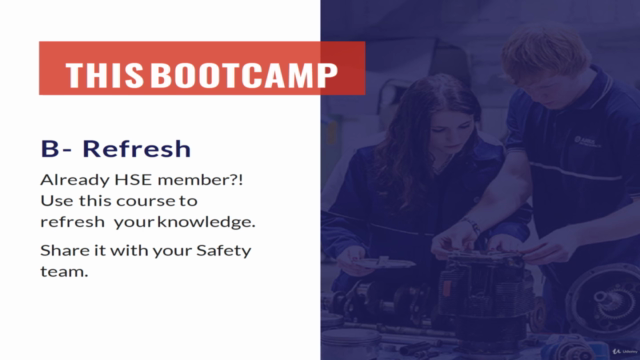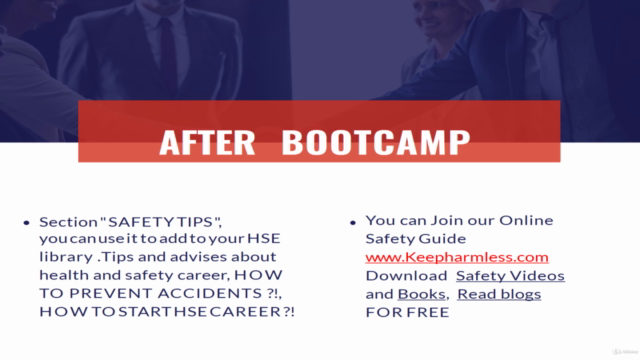Nebosh-Health and Safety Management System

Why take this course?
Based on the detailed outline you've provided, it seems like you're covering a comprehensive range of topics for a health and safety training program. Your course is structured to guide learners through understanding the importance of health and safety in the workplace, the legal framework, how to identify risks, implement control measures, and how to effectively monitor, audit, and review safety management systems.
Here's a breakdown of the chapters you've outlined:
Chapter 1: Workplace Hazards & Risk Control
- Introduction to workplace hazards and risk control.
- Working at height: hazards and control measures.
- Basic hazards associated with working at height.
- Control measures for working at height, including work platforms.
- Excavation work: identification of risks and appropriate controls.
- Health, welfare, and work environment requirements in the workplace.
- Risk factors and control measures for violence at work.
- Effects of substance misuse on health and safety and control measures to mitigate such risks.
- Hazards and control measures for safe movement of people within the workplace.
- Hazards and control measures for temporary works.
Chapter 2: Transport Hazards & Risk Control
- Hazards and control measures for the safe movement of vehicles in the workplace.
- Factors that increase driving risks at work.
- Control measures to reduce driving risks at work.
Chapter 3: General Principles of Health and Safety Management
- Introduction to risk assessment.
- The process of risk assessment.
- Principles of controlling risks and reducing hazards.
- Developing and implementing safe systems of work.
- The permit-to-work system.
Chapter 4: Planning
- Understanding risk assessment in planning processes.
- Risk reduction measures and control strategies.
- Developing and implementing safe systems of work.
- The role of the permit-to-work system in planning.
Chapter 5: Measuring, Audit, Review
- Active monitoring strategies.
- Reactive monitoring strategies.
- The importance of health and safety audits.
- Investigating workplace incidents to prevent future occurrences.
Your training program is structured to ensure that learners not only understand the theoretical aspects of health and safety management but also how to apply this knowledge in practical scenarios. The inclusion of "Training Questions & Answers" at the end of each chapter serves as an effective way to reinforce learning and assess understanding.
To enhance your training program:
- Consider including real-life case studies or examples to illustrate the principles discussed.
- Provide interactive elements such as quizzes, workshops, or simulations to engage learners actively.
- Incorporate multimedia resources like videos, infographics, and diagrams to cater to different learning styles.
- Ensure that all content is up-to-date with the latest regulations and industry best practices.
- Offer practical assessments where participants can demonstrate their understanding and ability to apply health and safety principles in various scenarios.
Remember to check the attached files and links for additional resources and lectures, as they will provide further context and information to support your training program.
Course Gallery




Loading charts...